QuestionQUESTION: Hi. I have a 10 gallon aquarium with a filter and a heater and 3 fake plants as well as an ornament for them to hide it. I have 5 platys and 3 bright orange swordtails that are the life of the tank. I cleaned my tank yesterday and observed that some of my platys were swimming vertically or lop-sided. this morning one of these were found stuck to my filter dead. I know that our water is low in pH and the lady at the pet store told me to add Instant ocean Sea Salt to raise the pH. I added it to the jug of water and checked the pH before adding it to the aquarium. I also made sure that the jug of water was at room temp before adding to the aquarium. I was wondering why my fish are dying so rapidly since I have only had them for about 3 weeks. As well, every so often my fish can be seen sucking on the plastic plants even though I have been feeding them about twice a day (and they certainly don't have a reduction in feeding) and every so often the swordtails have been spotted scratching on the gravel and plants (but not too much lately) Any help would be greatly appreciated,
Thank you very much
ANSWER: Hi Jennifer
How long has your tank been set up? If it's a newer tank, it could be going through the cycle process. That usually takes about 4-8 weeks. It's pretty stressful for the fish, and fish deaths during that time are common. It doesn't seem you had a problem until you changed the water.
So, I'm wondering a few things.
Did you use a dechlorinator for the new water added? Also, did you add the salt and then you noticed them swimming funny? Or did you do the water change, they started swimming funny, and the lady said to add the salt?
What exactly was your ph reading? Most fish are tank bred, and can handle a wide variety of ph's. The key is you want a stable ph, not one that's going to fluctuate around.
I'm not a fan of adjusting ph in a tank, and unless you're trying to breed delicate fish like discus, I advise to just leave the ph alone. Now, I'm really not all that familiar with the details of altering ph, I'm not a chemist :) There's a lot involved with doing it, knowing how to adjust your buffering capacity, and the hardness of the water. It's more then just adding ph up or ph down products. As far as the salt raising ph goes, I've been hearing that a lot lately, and I can't say for sure if it's true or not. There's cichlid salt out there, but it has a buffer in it which will help raise the ph. Just adding marine salt, I can't say for sure if it'll raise the ph and keep it there. I'd recommend not using the salt anymore for that. I also know that Instant Ocean is rather expensive, and if that was a small pet shop, I'm wondering if they were just trying to make a sale? I can't say for sure. How much did she have you add to the tank? If you used a dechlorinator, the salt level may have been too high for the fish, which may have caused them to act/swim weird as well.
One positive thing though, sounds like your fish had a parasite with them scratching on objects in the tank. That's usually a classic sign. Could've been ich starting up. I bet the salt took care of that :)
What's your thermostat set at currently?
How long has the tank been running?
How much salt did you use?
As for them eating on the plastic plants, they're just nibbling on some algae most likely. That's normal, they're varying their diets that way. I'd cut back on the feedings to once a day. They'll be fine. I actually skip a day or two during the week as well.
Let me know on those answers, might be good to keep treating for the parasites as well, which I'll give instructions once I know the answers. Also, do you have a test kit to test ammonia, nitrites, and nitrates? If so, what are those readings?
Christy
---------- FOLLOW-UP ----------
QUESTION: Hi again. My tank has been set up for about 4 weeks now. We are in a rural-ish area, about 20 minutes from the city so we have well water which doesn't require a dechlorinator. The pH of the water alone was about 6.6 which is why the pet store girl recommended the marine salt and it has been increasing the pH. After the water change, the pH was about 7.1. I noticed this was low then I added salt to the water jug before adding it to the tank (pH was about 7.4 just to even it all out). The thermostat is set for about 75 degrees, although it fluctuates slightly. I ended up using about 1/2 cup of salt. I don't have a test kit for ammonia nitrites and nitrates but if they aren't too expensive I can pick it up at the pet store on the weekend. I think that's all of the questions in there :)
Thanks again.
AnswerHey Jennifer
You know something kinda weird, we live in a real rural area also, and we actually have city water! Thought it was strange when we moved in, so I still have to buy/use dechlorinator...but anyway :)....
At 4 weeks, your tank is probably still cycling, usually takes 4-8 weeks for it to complete. That stress could've killed them. But for the weird swimming, I'm thinking it may have been too much salt. I'll usually recommend 1 tablespoon per 5 US gallons, or on occasion 1 teaspoon per 1 or 2 US gallon. Now I looked up the conversion online, because along with me not being a good chemist, I'm also pretty bad at math :) 8 tablespoons=1/2 cup. What I recommend at the 1 tbls per 5 gal., so that would mean you added salt equivalent to what's recommended for a 40 gallon tank.
Another problem I see, the ph was 6.6, did the water change it went up to 7.1, added the salt and it went to 7.4. That's way to much to be altering the ph so quickly. That alone would stress/kill the fish as well. A ph of 6.6 isn't bad, platies can handle that. Again, I would suggest just leaving it alone. Any changes with anything in a fish tank, need to be done slowly and gradually. They stress so easily.
One thing you can try, fill a glass of water from the tap and do a ph test. Let the water sit out all day. Test it again and see if the ph changes. If it does, then when you do your water changes, just let the water sit out for awhile so there won't be such a drastic change to it when it's added to the tank. Another thing too, since your tank is cycling, if there's ammonia in the tank, you want the ph to be lower. Ammonia at lower levels is converted to a less lethal form for the fish, I believe it's called ammonium. So, if there was ammonia present, and you increased the ph, that could've caused the problem too.
The test kits can be expensive. I just bought a good one by API, and it was 30.00, does ph, high ph, nitrite, ammonia, & nitrates. It's the dropper test kind, the little test strip kits are a bit cheaper, but they're not as accurate, and leave a lot of room for error-I found that out personally.
Cut back on your salt dosage, and just use it as a disease/parasite treatment instead of using it for ph. 1 tablespoon per 5 US gallons-being mindful the salt stays in the tank until you actually remove it via water changes. Also very very slowly, over the course of the next 2 days, raise your thermostat to about 82F. This is for the parasite they may have had when they were scratching. Continue with the heat/salt for at least another 14 days, even if you don't see any signs of parasites/ich. Do a water change, about 30% to get some of that salt out of the tank. The smaller water changes will be good as well to help them adjust back to the lower ph levels. After you're done with the treatment, you can slowly lower the temp back down to about 76-78F.
Well hope that helps! If you have any more questions please ask!!
Christy

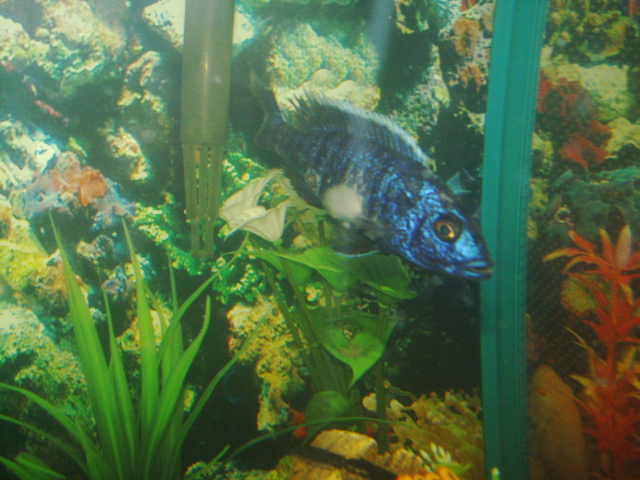 cichlid infection?
Question
Cichlid injured
one of my cichlid fish was bul
cichlid infection?
Question
Cichlid injured
one of my cichlid fish was bul
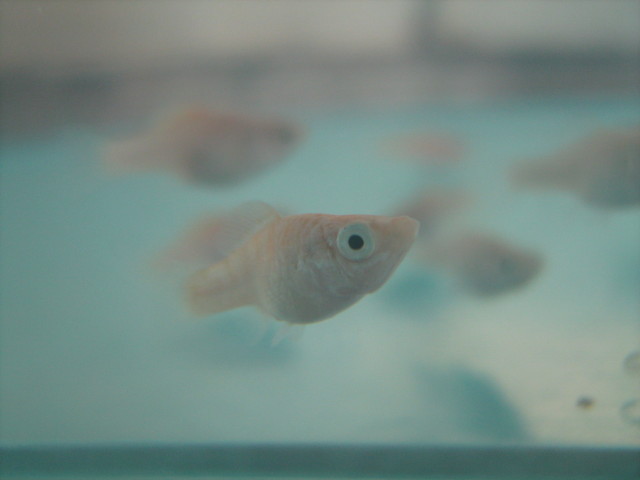 balloon molly fish
Questionmy baby balloon mollys
QUESTION: hi, i a
balloon molly fish
Questionmy baby balloon mollys
QUESTION: hi, i a
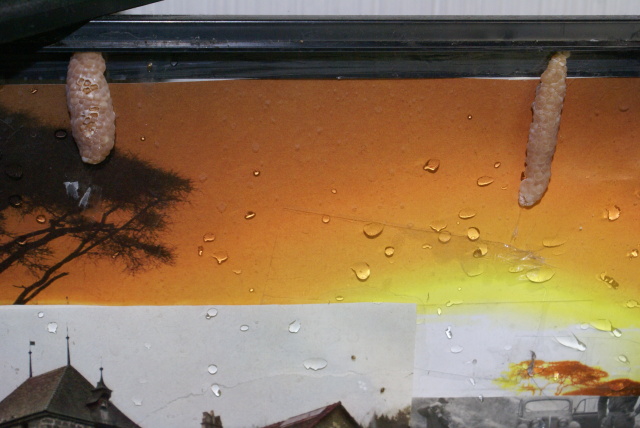 wierd egg sack in newt tank
Question
eggs
I have a firebelly newt tank, with apple
wierd egg sack in newt tank
Question
eggs
I have a firebelly newt tank, with apple
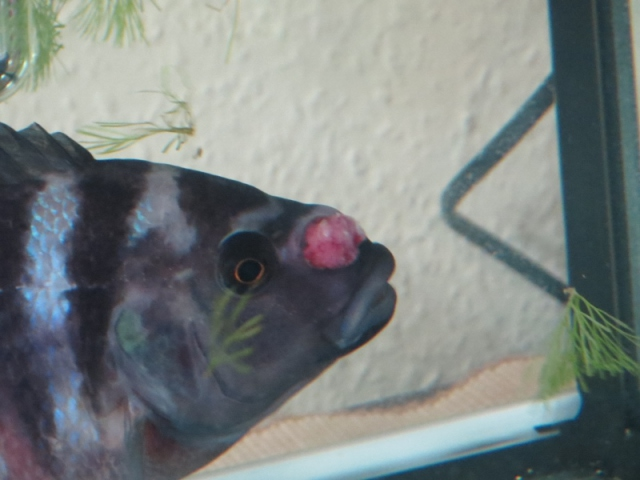 Bumblebee - Ulcer?
Question
Growth? Growth?
Hi Richard,
I hav
Bumblebee - Ulcer?
Question
Growth? Growth?
Hi Richard,
I hav
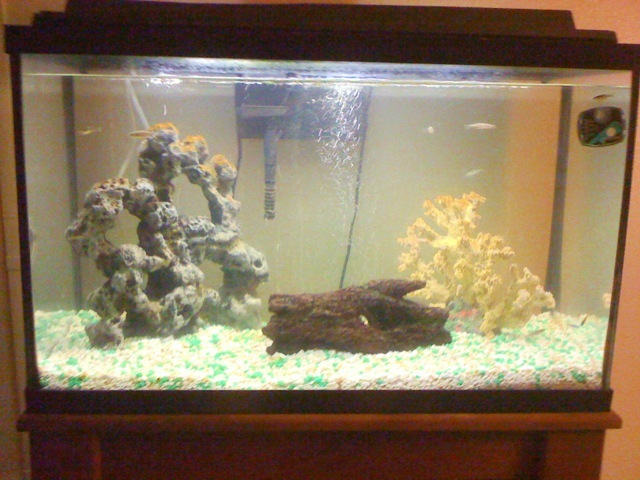 Adding Fish To My Freshwater Tank
Question
My Tank
Hi Jaymie,
My name
Adding Fish To My Freshwater Tank
Question
My Tank
Hi Jaymie,
My name